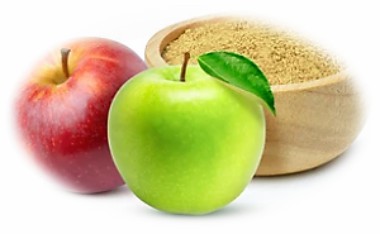Pectin Oligosaccharide-based Food Preservation Solution
Pectin is composed of homogalacturonic acid (HG, α-1,4-linked galacturonic acid monomer) and rhamnuronic acid (RG, alternating galacturonic acid and rhamnose with neutral side chains main chain). The controlled hydrolysis of pectin by chemical, enzymatic and hydrothermal methods can be used to produce pectin oligosaccharides, which can be used as food antibacterial agents and food nutrients. Aprofood deeply explores the molecular mechanism behind the activity of pectin oligosaccharides, and is committed to providing global customers with comprehensive food preservation solutions.
What are Pectin Oligosaccharides?

Pectin is a complex and heterogeneous polysaccharide found in the primary cell walls and intercellular regions of higher plants. Extraction of pectin oligosaccharides, usually via pectin, is a promising step towards the production of prebiotics from agricultural by-products. Pectin oligosaccharides (POS) are nondigestible oligosaccharides that have beneficial effects on the host by selectively stimulating the growth and activity of one or a small number of bacteria (Bifidobacteria and Lactobacilli) in the colon. Pectin oligosaccharides have been reported to inhibit the activities of intestinal putrefaction and pathogenic organisms. The literature also shows that POS can act as a phytoalexin inducer, flowering inducer and antibacterial agent in plants.
Applications of POS in Food Preservation
Pectin oligosaccharides (POS) have been found to act as biological effectors, activating defense responses and regulating plant growth and development. For example, strawberry fruit treated with different concentrations of POS significantly increased the total phenolic and anthocyanin contents, and maintained a high-quality during storage. Galacturonic acid treatment improved tomato yield and quality. Non-cooling pericarp pitting (NCPP), rot, ethylene release rate, and chilling injury (CI) were all reduced in orange fruits after treatment with POS. In addition, pectin oligosaccharides also exhibit good antibacterial activity, for example, POS can inhibit the Gram-positive bacteria Micrococcus luteus and lead to the reduction of bacterial colonization and the number of persistent cells, which has the potential to be a food antibacterial agent.
Our Solutions
Pectin oligosaccharides, as a kind of oligosaccharides, exhibit good antibacterial properties and plant regulation, and can be used for food preservation. Aprofood has deeply explored the application potential of pectin oligosaccharides to provide global customers with comprehensive food preservation solutions based on pectin oligosaccharides.
- In our solutions, we fully focus on the physical and chemical properties of pectin oligosaccharides, and provide a variety of separation, identification and characterization methods to meet the different research needs of customers.
- We are committed to building a food preservation platform based on pectin oligosaccharides, and provide various types of POS for food preservation, including the development of food antibacterial agents, antibacterial coatings, and antibacterial packaging.
- Post-harvest regulation of plants is an important application of POS. Based on this, we also provide customized POS solutions for different varieties of fruits and vegetables. From internal gene expression to exogenous factors, we provide a one-stop service process.
Our Advantages

Comprehensive Solutions

Multimethod Analysis

Professional Team

Cost-effective Service
Aprofood is committed to providing extensive support to customers around the world in food preservation related research, please contact us to learn more about our solutions for food preservation.
References
- Babbar, N., Dejonghe, W., Gatti, M., Sforza, S., & Elst, K. (2016). Pectic oligosaccharides from agricultural by-products: production, characterization and health benefits. Critical reviews in biotechnology, 36(4), 594–606.
- Virgen-Ortiz, J. J., Morales-Ventura, J. M., Colín-Chávez, C., Esquivel-Chávez, F., Vargas-Arispuro, I., Aispuro-Hernández, E., & Martínez-Téllez, M. A. (2020). Postharvest application of pectic-oligosaccharides on quality attributes, activities of defense-related enzymes, and anthocyanin accumulation in strawberry. Journal of the science of food and agriculture, 100(5), 1949–1961.
For Research Use Only!

